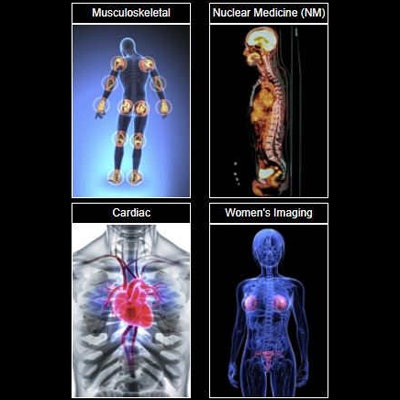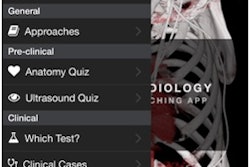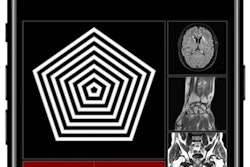
AuntMinnie.com presents the next article in an ongoing series highlighting notable mobile apps in radiology. In this installment, we take a look at Rads Consult, a web app developed by Dr. Munib Sana, a musculoskeletal radiologist at a Chicago-based radiology practice. Created to assist referring physicians in appropriately ordering imaging studies, Rads Consult is a radiology-specific clinical decision support (CDS) tool designed for use on mobile devices.
To learn more about Rads Consult, we chatted with Dr. Sana.
AuntMinnie: What inspired you to create this app? What problem does it help solve?
Sana: It's no secret that healthcare costs in the U.S are currently untenable at nearly $3.5 trillion each year -- 18% of our gross domestic product -- and advanced imaging has played a big role. For example, a 2014 study in the Annals of Internal Medicine showed that unnecessary cardiac stress test imaging produced $500 million in annual waste. That's just from one imaging exam and doesn't even consider the adverse outcomes from overdiagnosis, radiation exposure, and a reduction in the availability of resources for other patients. On a macro level, that is the problem that Rads Consult aims to solve.
 Dr. Munib Sana, developer of Rads Consult.
Dr. Munib Sana, developer of Rads Consult.On a day-to-day level, we're looking to help the thoughtful clinician who struggles with providing optimal and compassionate care on the one hand, while also trying to limit the use of resources on the other. For most physicians and healthcare professionals, formal radiology training was not part of their medical education and is often learned piecemeal, by trial and error, or by contacting the radiologist directly. For obvious reasons, this is very unfortunate, but it's not because of a lack of compassion or effort on the part of ordering providers. The frenetic pace of the average workday simply does not compel collaboration between the ordering clinician and the radiologist, which is why it is often neglected -- at the expense of the patient. On this ground level, we expect that Rads Consult will reduce inappropriate imaging, improve efficiency and patient safety, decrease cost, and advance education.
Who is the target audience, and how do you envision the app will be used?
While most clinicians order imaging routinely throughout their practice, there is no formal training on how or what to order, what the limitations are, or even what's available. Furthermore, imaging is complicated with patients who have renal insufficiency, allergies, are pregnant, or cannot undergo certain exams. The app was created to address this massive and costly shortfall in our medical education system. Therefore, nearly every physician, nurse practitioner, physician's assistant, and student can make use of Rads Consult.
 Rads Consult users can enter any symptom or diagnosis into a search bar to receive imaging recommendations. Image courtesy of Dr. Munib Sana.
Rads Consult users can enter any symptom or diagnosis into a search bar to receive imaging recommendations. Image courtesy of Dr. Munib Sana.To really put my vision of Rads Consult's utility into perspective, I must address the rest of the contributors in the radiology CDS arena. Certainly they have been at this much longer than I, have invested hundreds of thousands if not millions of dollars, are fully integrated with electronic medical record (EMR) software, and are approved by the U.S. Centers for Medicare and Medicaid Services (CMS) for reimbursement purposes. So why would anyone use Rads Consult instead of a product from one of these companies?
It's because I believe Rads Consult is a far more comprehensive and user-friendly product. It was built with the end user in mind (hence the mobile platform), not CMS regulations and EMR restrictions. If Rads Consult applied for CMS approval, it would be restricted to the 100 or so diagnoses for which appropriate use criteria (AUC) are available, and the product would be much less useful. Additionally, EMR integration would position Rads Consult as a roadblock to physicians' workflow, which I don't believe is necessary to encourage judicious imaging. CMS requires all other tools like this to report physicians who are not in compliance with the limited AUC available. I'd rather help educate than punish physicians because, realistically, there will never be AUC for every clinical scenario -- making many of the existing clinical decision support mechanism (CDSM) products of limited value.
Most importantly, Rads Consult is available to everyone. Even if well-meaning clinicians are willing to pay for a radiology CDS tool to provide better care for their patients, the tool is not available to them. The CMS-approved CDSMs are only available to institutions, not individuals. To be fair, CMS will require a minimum of one CDSM to be free to the public, and there are three free tools advertised on the CMS website. However, none of these vendors' products are actually available to interact with (as of this interview). The only free "tool" is hundreds of pages of PDF documents. Physicians do not have time to read through a 36-page PDF of stroke imaging recommendations, for example, while they're busy performing their regular clinical duties. The industry has failed in this aspect and given us the hardcover Encyclopedia Britannica when we just want the smartphone Wikipedia version.
What are the app's most important features?
Rads Consult answers every question, including whether to give intravenous (IV) or oral contrast, how to best image pregnant or breastfeeding patients, when to withhold/reverse anticoagulation medicines and minimum required anticoagulation parameters prior to any radiology procedure, and what imaging study to order for over 1,000 searchable diagnoses and symptoms. It also has every type of radiology exam and interventional radiology procedure you can think of with the common indications of when one would order such an exam, including all the oral and IV contrast variations. It's evidence-based, with American College of Radiology Appropriateness Criteria displayed -- when available -- next to each search.
My favorite part of the app, however, is the Most Common Radiology Q&A section, which includes almost 100 of the most commonly asked radiology questions. Many of the questions relate to things that are not easily found online or in books: At what age is sedation necessary for pediatric patients to get an MRI? What's the weight limit of a CT scanner? Is a 21G needle in the hand good enough for a CT with contrast or a CTA head and neck? Is a noncontrast CT good enough to diagnose ... ? If users can't find the question they're looking for or need clarification on an answer, they can ask it through a pop-up on the bottom of the Q&A page, and it will be posted as soon as one of our subspecialized radiologists has the time to answer it.
Could you discuss why you elected to create a web app instead of a traditional iOS or Android app? Do you have any plans to develop native iOS or Android apps?
Cost and functionality. Progressive web apps (PWAs) are less restrictive than native apps, and they allow Rads Consult to function seamlessly on multiple devices and operating systems without new code or the constant maintenance required for a native app. It will surprise a lot of people to know that the Uber, Lyft, and Tinder apps are actually PWAs for many of the same reasons we chose to go this route. When done well, there is practically no front-end difference between a PWA and a native app.
How many users do you currently have?
It's difficult to predict exactly how many users we have as we don't require downloading the app in order to use it. For the month of January, however, Rads Consult had nearly 4,000 users; we probably average around 100 visits to the site every day. Of course, those numbers include new and returning users.
What are your future plans for the app? Are there any new features in the works, and do you plan to develop any other similar apps?
We have no set plans on where to take Rads Consult other than continuing to build the best radiology CDS tool on the market. We're aware of some of the quirks of the app and how a few sections are a little bare, but we didn't want to delay launching Rads Consult given how helpful we knew it would be and how large of a void this imperfect product can help fill.
Currently, we are running a pilot program at Creighton University's hospital system and accumulating data to help support the idea that a mobile tool like this can cut costs, increase efficiency, and improve patient safety. Hopefully, the data will be published in the next year.
We will also be updating content on a monthly basis. An exciting new feature coming soon is an x-ray imaging section that will help clinicians decide between ordering one and seven views of the shoulder, for example.
Ultimately, this remains a passion project of mine, born out of frustration with the industry. So while there are certainly multiple ways to monetize Rads Consult, we're going to keep focusing on the users and the build instead of repeating the mistakes of my predecessors -- creating a compliant but overregulated and cumbersome tool to force physicians into checking boxes aimed at salvaging reimbursements. That's not unimportant, but it's also not what should be driving the products in this space.
Rads Consult is available for free from the developer's website.



















